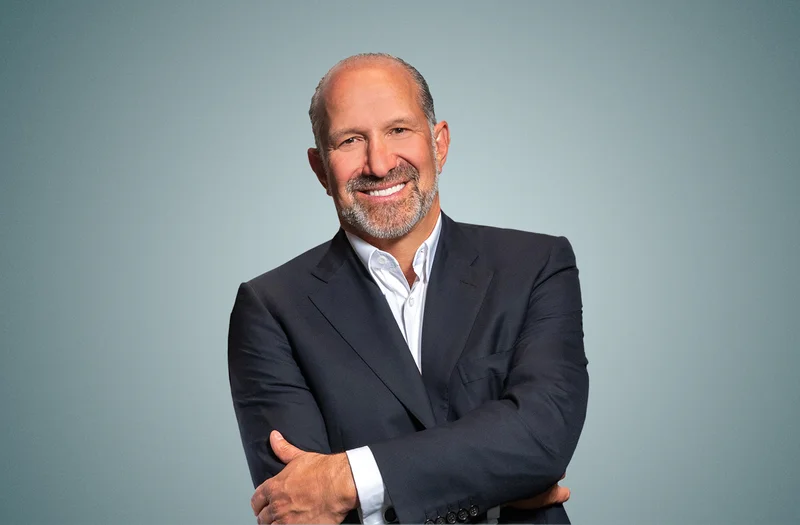The new Secretary of Commerce, Howard Lutnick, has signaled a fundamental recalibration of the H-1B visa program. The preliminary statements suggest a significant overhaul before a proposed, and frankly eye-watering, $100,000 application fee is slated to take effect in February 2026. The core of the argument presented is a narrative pitting two classes of potential immigrants against each other: low-cost foreign tech consultants and high-value professionals like doctors and educators.
This is a clean, compelling story. It’s also a significant oversimplification of the economic function of the program.
According to reports, Secretary Howard Lutnick frames the current system as a "wrong idea," one that is "fundamentally flawed" by enabling the entry of inexpensive tech labor. He criticizes the H-1B lottery, quoting tech executives who call the mechanism "bizarre." The proposed solution appears to be a combination of systemic changes and a prohibitive fee structure, designed to filter applicants by their employer's willingness to pay. Lutnick states, "I am firmly of the view that this idea—of bringing in inexpensive tech consultants to this country and having them bring their families—is wrong."
The sentiment is clear. The underlying data, however, suggests a more complex reality. The H-1B visa has always been designated for "specialty occupations," which require a bachelor's degree or its equivalent as a minimum for entry. The notion that it's an open door for "low-cost" labor is a narrative that conflicts with the program's statutory design. The issue has never been a lack of qualified applicants; it has been an extreme surplus of them. The program is subject to a congressionally mandated annual cap (currently 85,000, with 20,000 reserved for master's degree holders). In recent years, applications have exceeded this cap by a factor of five or more—for the fiscal year 2025 lottery, USCIS received over 470,000 eligible registrations.
This is the context missing from the "bizarre lottery" critique. The lottery is not a selection method of choice; it is a rationing mechanism born of scarcity. When demand vastly outstrips a fixed supply, a lottery is one of the few ways to allocate the resource without explicit, and likely political, criteria. To call it "bizarre" is to ignore the foundational constraint that creates it.
A Filter for Skill or a Tollbooth for Capital?
Deconstructing the Economic Signal
This is the part of the public messaging that I find genuinely puzzling. When an analyst sees a system with capped supply and overwhelming demand, the immediate conclusion is that the asset is underpriced. The current H-1B filing fees are in the thousands, not tens of thousands. A proposed fee of $100,000 isn't just an adjustment; it's a phase transition. It fundamentally changes the economic calculation for every company that uses the program.

Lutnick, the Commerce Secretary, argues, "Why, when you're trying to take in skilled workers, would you do it by a lottery? That just does not make any sense." But from a market perspective, it makes perfect sense if the price is set artificially low. The lottery is the non-monetary clearing mechanism. The proposed alternative—a massive fee—is simply a different clearing mechanism. It replaces random chance with pure price signaling. It doesn't necessarily select for "better" talent, only for talent whose perceived return on investment to a specific company can justify a six-figure upfront cost.
The argument that this will favor doctors and educators over tech consultants is also worth examining. Are the institutions that hire foreign doctors and educators—hospitals, research universities, school districts—better positioned to absorb a $100,000 per-head fee than major technology firms or consulting giants? The data on institutional budgets would suggest not. A large tech company can amortize that cost against a multi-million dollar project. A rural hospital seeking a specialist or a university hiring a postdoctoral researcher faces a much different equation. The fee may inadvertently filter for the very large, very profitable tech firms that Lutnick seems to be targeting.
The proposed changes are expected to be resolved by February 2026. Details on the mechanics beyond the fee remain scarce, but the stated goal is to pivot away from the current model. The critique that the system was "set up in the 1990s and sort of butchered along the way" is accurate in one sense: the world has changed, but the program's numerical caps have not kept pace with the growth of the tech-driven economy. The demand for skilled labor has grown by an order of magnitude, while the supply of visas has remained largely static for about two decades—to be more exact, since 2004.
This discrepancy is the root cause of the lottery and the intense competition. It is not, as the narrative suggests, a flaw designed to import "inexpensive" labor. It's a bottleneck. The $100,000 fee doesn't widen the bottleneck; it simply reserves passage for those with the most capital. This may be a desired policy outcome, but framing it as a qualitative upgrade from "low-cost tech consultants" to "doctors" is a narrative that the raw economics do not necessarily support. It is more likely to create a bidding war that advantages incumbents and large corporations, regardless of sector.
Ultimately, the H-1B program is a variable in the complex equation of American economic competitiveness. Changing its parameters so drastically sends a powerful signal. The question is whether that signal will attract the inputs the administration claims to want, or simply raise the cost of doing business for everyone.
Recalibrating the Input
The entire debate is being framed as a matter of quality—filtering for better, more skilled immigrants. But the primary tool being proposed, a $100,000 fee, is a tool of price. It doesn't measure skill, innovation, or societal contribution; it measures an employer's immediate budget and projected ROI. The policy isn't a filter for talent. It's a tax on acquiring it, and its primary effect will be to consolidate access to global talent in the hands of the few entities that can afford the toll. The narrative is about quality; the mechanism is about capital.
Reference article source:
